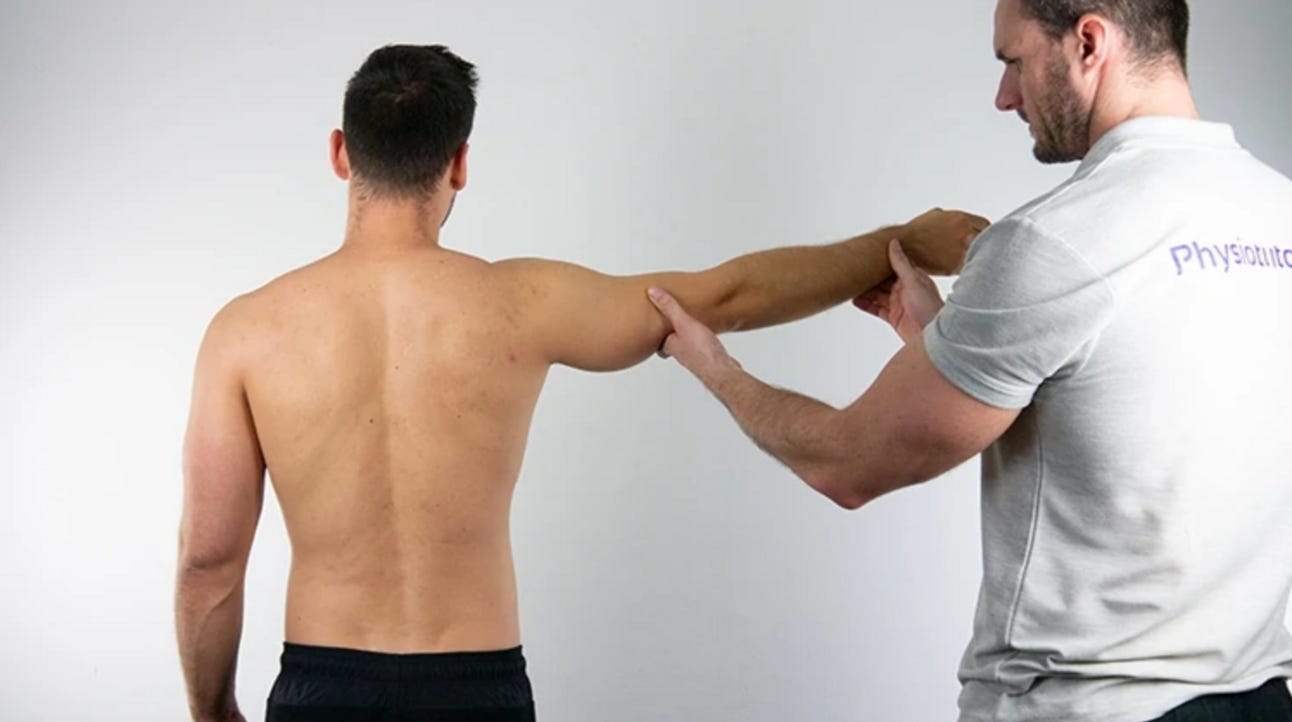Drop Arm Test, also known as the Drop Arm Sign, is a diagnostic maneuver used to assess for full-thickness rotator cuff tears, particularly of the supraspinatus and infraspinatus tendons. This test is commonly used in orthopedic and physical therapy evaluations to help identify potential rotator cuff pathology.
Procedure:
To perform the Drop Arm Test:
Position the patient in a standing or sitting position
Passively raise the patient's affected arm to 90 degrees of abduction and external rotation.
Ask the patient to maintain this position as you release your support.
Instruct the patient to slowly lower their arm back to their side in a controlled manner.
Interpretation:
How do you know when the test is positive:
The patient is unable to control the downward movement of their arm,
The arm drops suddenly or falls to the side, or
The patient experiences sudden pain during the maneuver.
You know the test is negative when the patient can smoothly and slowly lower their arm without pain or difficulty.
Clinical Significance:
According to research on the Drop Arm Test, this test has moderate clinical value in diagnosing full-thickness rotator cuff tears. According to a study by Miller et al. in 2008, the test has:
Sensitivity: 73%
Specificity: 77%
These values indicate that the test moderately alters the post-test probability of a full-thickness tear.
Remember though that this test is not the end all be all. It is very important that this test be used in conjunction with other clinical assessments and imaging studies for a more complete evaluation of rotator cuff.





